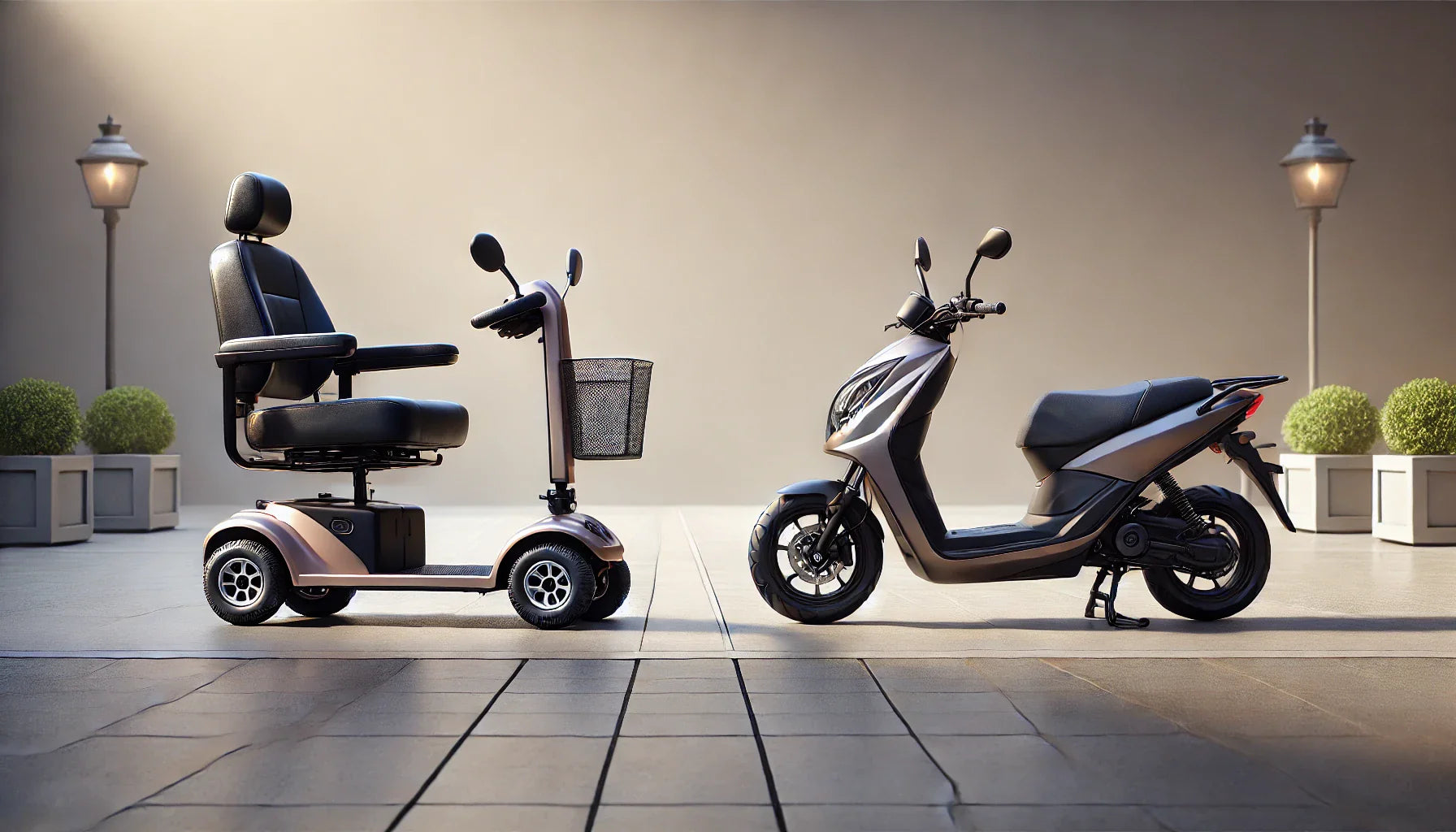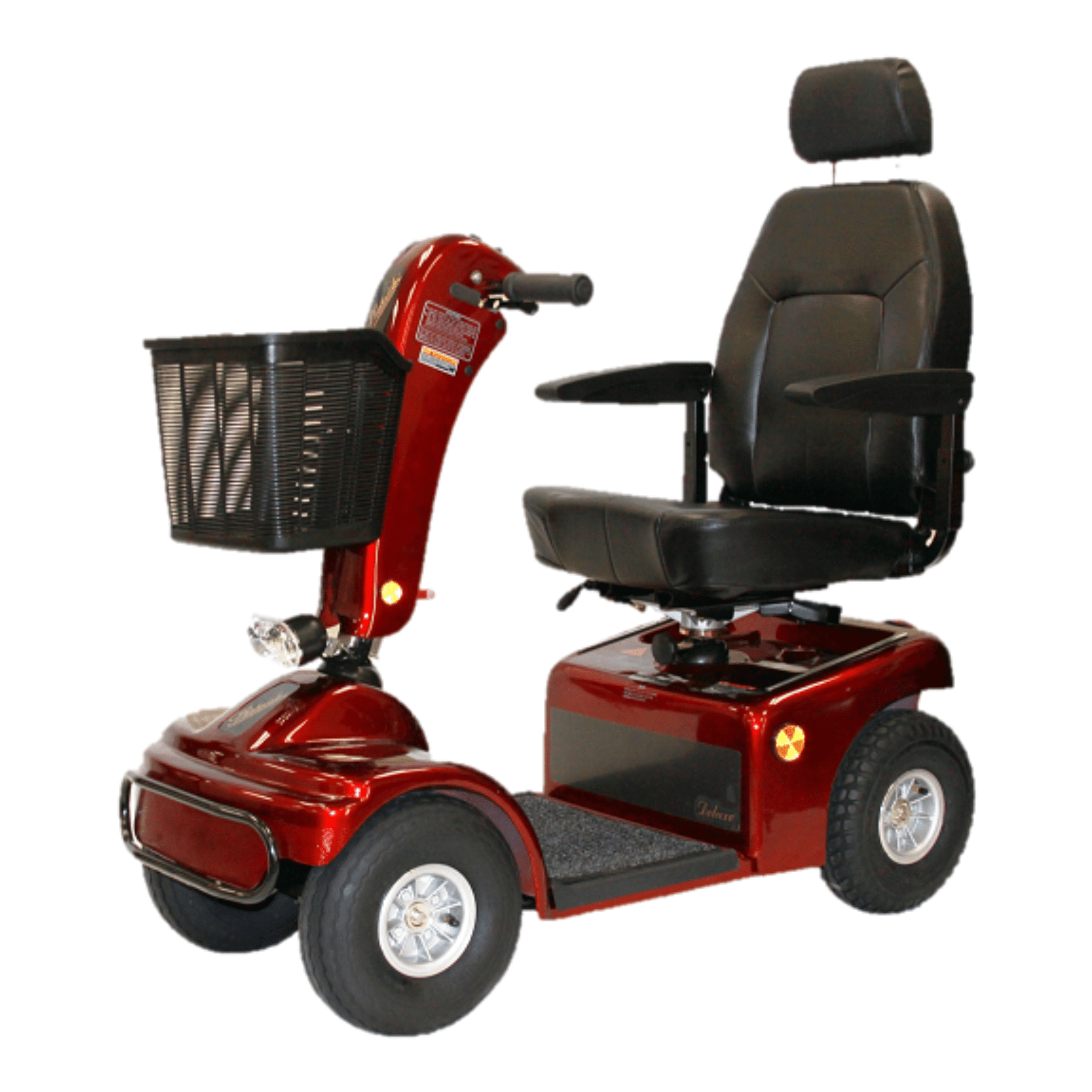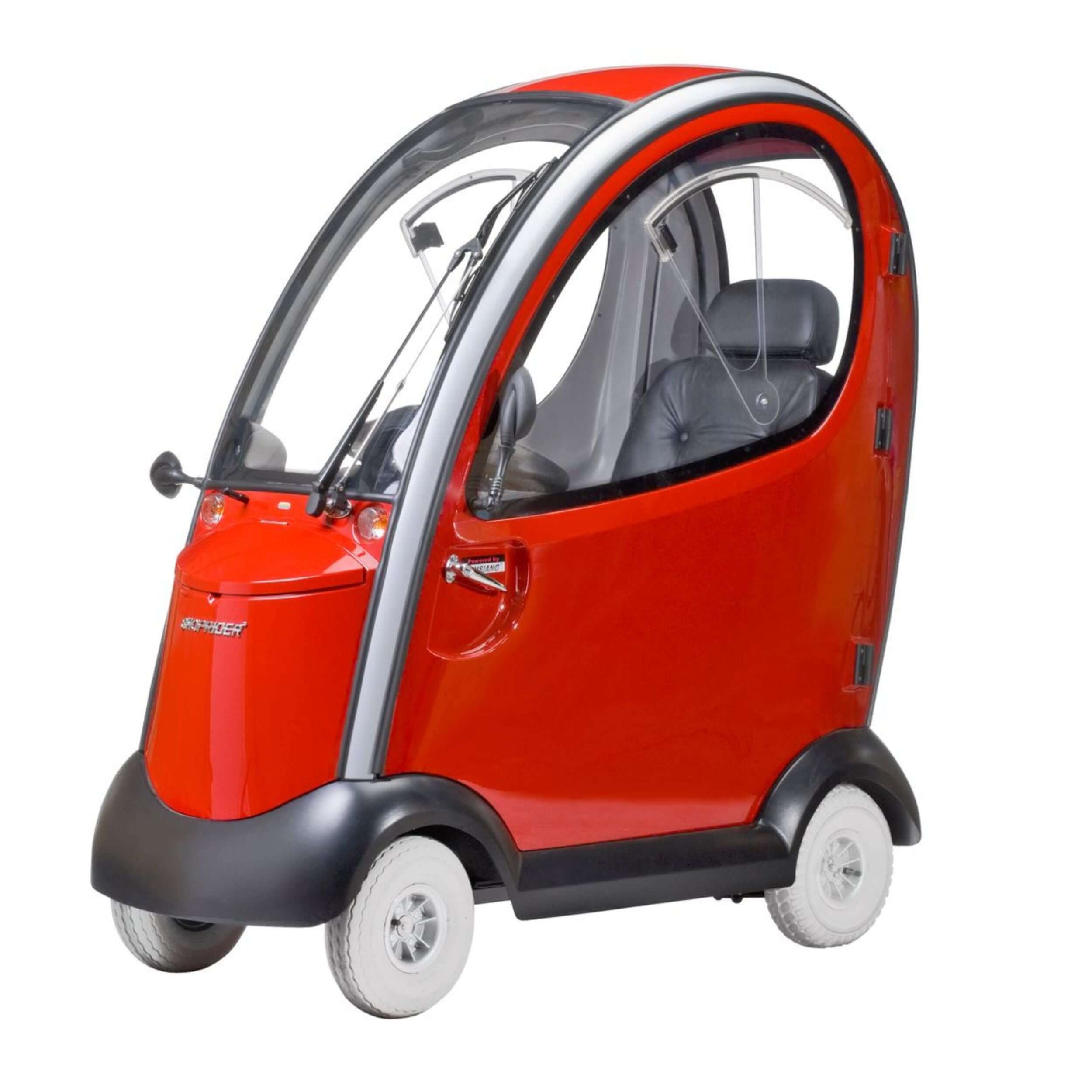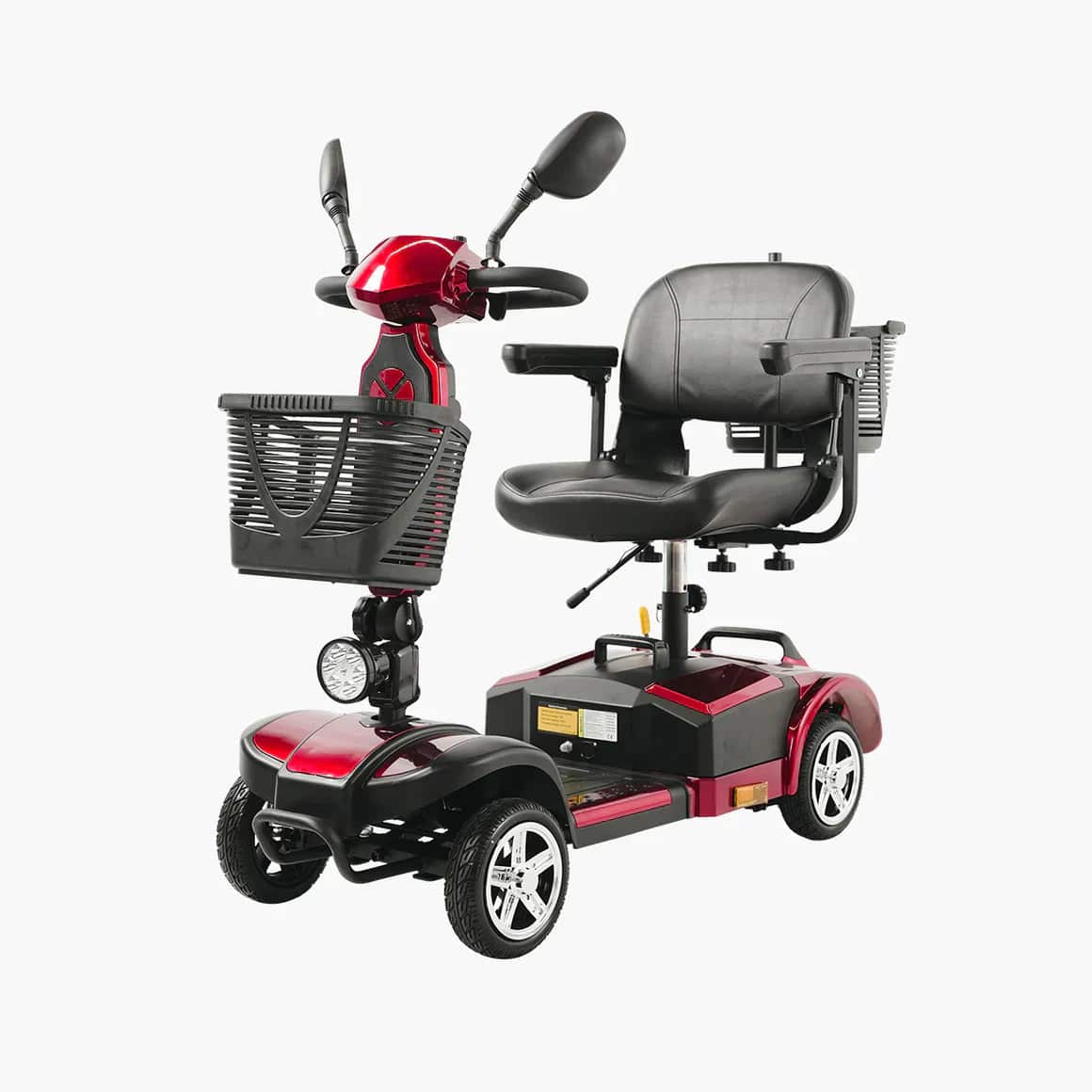
Key Takeaways:
When considering mobility scooter vs moped options for daily transportation, both offer distinct advantages and limitations that significantly impact their suitability for different users. Understanding these key differences helps determine which vehicle better meets your specific travel needs, physical capabilities, and lifestyle requirements.
The mobility scooter vs moped comparison involves evaluating fundamental differences in design, purpose, and legal classification. Each vehicle type serves different primary functions and target users, which directly affects their suitability for daily travel.
At MedShopDirect, we specialize in high-quality Shoprider mobility scooters and Vocic mobility scooters designed for users with mobility limitations. Our selection includes various models that address different mobility needs, from compact travel scooters to robust outdoor models that compete with mopeds for certain uses.
If you're specifically comparing mobility options for users with physical limitations, our guide on mobility scooter vs power wheelchair options provides additional insights into medical mobility solutions.
Let's examine the fundamental differences between mobility scooters and mopeds to determine which is better for daily travel needs.
Mobility scooters and mopeds differ significantly in design, performance, and legal requirements:
| Feature | Mobility Scooters | Mopeds |
|---|---|---|
| Maximum Speed | 4-10 mph | 30-40 mph (varies by state) |
| Typical Range | 10-30 miles per charge | 50-100 miles per tank |
| Power Source | Electric batteries | Primarily gas (some electric) |
| Seating Design | Swivel seat with armrests | Motorcycle-style seating |
| Controls | Tiller (handlebar) steering | Motorcycle-style controls |
| Storage | Baskets, under-seat compartments | Limited without accessories |
| Weight Capacity | 250-500 lbs (model dependent) | 250-400 lbs (model dependent) |
| Maneuverability | Excellent in tight spaces | Better for open roads |
| Terrain Handling | Smooth to moderately rough | Varied terrain capability |
The regulatory requirements and practical aspects also differ substantially:
| Consideration | Mobility Scooters | Mopeds |
|---|---|---|
| License Required | No | Yes (in most states) |
| Registration | No | Yes |
| Insurance | Not typically required | Required |
| Road Usage | Typically sidewalks and crosswalks | Roads and bike lanes |
| Indoor Usage | Permitted in most buildings | Not permitted |
| Age Restrictions | None | Minimum age (varies by state) |
| Parking | Can be brought inside | Requires designated parking |
| Public Transit | Many accommodate mobility scooters | Not accommodated |
| Weather Protection | Limited unless equipped with canopy | Limited unless equipped |
These differences highlight the distinct purposes and target users of each vehicle type.
For those who determine that a mobility scooter better meets their daily travel needs, these models offer excellent performance and reliability:

In the mobility scooter vs moped comparison, mobility scooters offer significant benefits for many users:
Mobility scooters provide accessibility advantages that mopeds cannot match:
These accessibility features make mobility scooters ideal for integrated daily activities that include both outdoor travel and indoor destinations.
Mobility scooters prioritize user comfort and simplicity:
These comfort features are particularly beneficial for users with physical limitations or reduced stamina.
Mobility scooters offer practical benefits for daily usage:
These practical considerations often make mobility scooters more economical and convenient for regular use.
Mopeds offer their own set of benefits in the mobility scooter vs moped comparison:
Mopeds excel in transportation efficiency:
These performance advantages make mopeds superior for longer commutes.
Mopeds' vehicle classification provides certain benefits:
These legal factors can be advantageous in certain transportation scenarios.
Moped design offers practical advantages:
These design elements can enhance the practical utility for certain users.
Some high-performance mobility scooters bridge the gap between standard models and mopeds:

The Shoprider Flagship Cabin represents the pinnacle of mobility scooter design, offering many advantages that directly compete with mopeds. This premium model combines superior comfort and all-weather protection with excellent range and stability for serious daily transportation needs.

The Vocic D61 Mid-Size scooter bridges the gap between standard mobility scooters and mopeds with its excellent performance specifications. This versatile model offers enhanced speed and range capabilities while maintaining the accessibility advantages of mobility scooters.
When deciding between these transportation options, consider these critical factors:
Your daily travel needs significantly impact which option is better:
Realistic assessment of typical travel patterns helps determine the better option.
Your physical condition and comfort requirements matter significantly:
These physical considerations often determine which option provides greater independence.
Your typical travel environment affects practical usability:
Local infrastructure significantly impacts the practical utility of each option.
The financial aspects of ownership differ substantially:
The upfront investment varies by type and quality:
Quality models in both categories represent significant investments.
Long-term costs differ significantly:
| Expense Type | Mobility Scooters | Mopeds |
|---|---|---|
| Fuel/Energy | Electricity: $0.10-$0.30 per charge | Gasoline: $5-$10 per tank |
| Insurance | Typically none | $100-$500 annually |
| Registration | None | $15-$60 annually |
| License | None | $10-$25 (initial/renewal) |
| Maintenance | $100-$300 annually | $200-$600 annually |
| Battery Replacement | $200-$600 every 2-3 years | Minimal battery costs |
| Accessories | Optional | Often necessary (helmet, etc.) |
These ongoing costs significantly impact the total cost of ownership over time.
When evaluating the mobility scooter vs moped options for consistent daily use, consider these long-term factors:
How each option accommodates evolving requirements:
Mobility scooters typically offer greater adaptability to changing physical needs.
How seamlessly each option fits into daily life:
The practical integration depends heavily on your typical daily activities.
Weather and seasonal changes impact usability:
Seasonal factors may influence which option provides more consistent year-round utility.
Some options bridge the gap between traditional mobility scooter vs moped choices:
Premium models with advanced capabilities:
These enhanced models blur the distinction between mobility scooters and small vehicles.
Alternative mobility options with different advantages:
These alternatives may better meet specific needs for some users.
In the mobility scooter vs moped comparison, determining which is "better" depends entirely on your specific circumstances, physical capabilities, and daily travel patterns. For users with mobility limitations who need access to various indoor and outdoor environments, mobility scooters like the Shoprider Flagship Cabin or Shoprider Sprinter XL4 often provide greater overall freedom and utility despite their lower speed capabilities.
If your travel needs primarily involve longer distances on roadways, with minimal need for indoor access or accommodation of mobility limitations, a moped may offer advantages through higher speed and greater range. However, these benefits come with additional regulatory requirements and limitations on where the vehicle can be used.
Many users find that high-performance mobility scooters from quality manufacturers like Shoprider offer an excellent middle ground, providing sufficient speed and range for daily needs while maintaining the accessibility advantages and simplified regulatory status of mobility scooters.
The optimal solution involves honest assessment of your specific travel needs, physical capabilities, and typical destinations. Testing different options in your actual usage environments provides the clearest indication of which solution will better serve your daily transportation requirements.
For personalized guidance on selecting the perfect mobility solution for your specific daily travel needs, contact our mobility specialists who can provide detailed recommendations based on your unique requirements and help you find the ideal option to enhance your freedom and independence.
placeholder